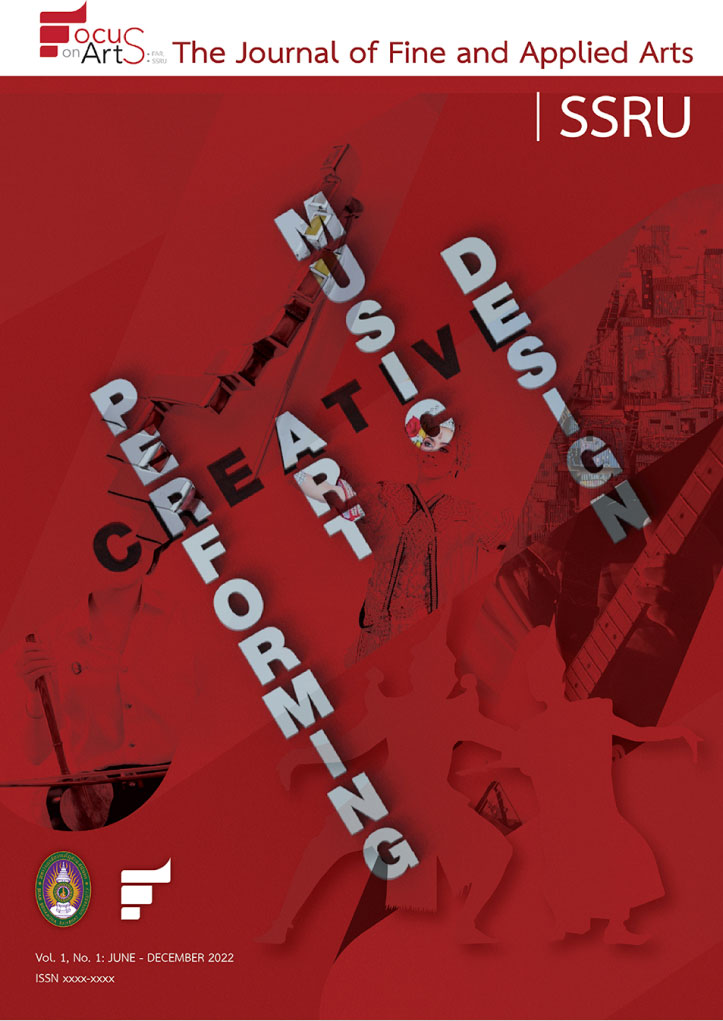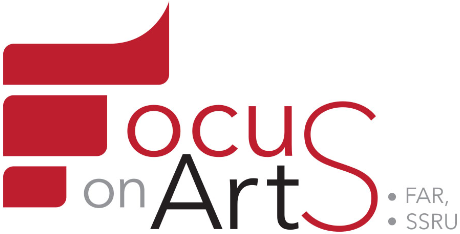The glass chapel in the middle of Wat Weerachote Thammaram’s basin is an artistic building built on the 30 rai of land donated by Chote Banyong Family in 1993 to develop the abbey into a temple. The additional lands were later donated, bringing the total to 83 rai. The chapel was designed by Phraraj Brahmayan (Reverend Father Ruesi Ling Dam), who was a teacher of the first and current abbot – Phrakhru Ong-Art Apagaro. Its architectural decoration contains Thai-style patterns and interior sculptures. Currently, there has been no one collecting this information and studying how to create a public relations media design to publicize the beauty of this captioned chapel for public acknowledgement, including access to this chapel. This research study therefore aims to collect the data of the interior sculptures of the chapel and design the public relations media for public acknowledgement including a location map to this chapel for interested persons in terms of study and tourist visit. Data collection consists of the primary one gained through 3 methods; 1) an interview on the history of the chapel with the abbot and disciples, 3 people gave similar information on the construction term for gathering of facts, 2) Thai-style pattern term with 3 Thai-style pattern experts gave similar information that Thai-style patterns have been created since the old days with tradition but indefinite form. In each era, Thai-style patterns were created in various forms, 2. As per the survey forms, the architectural decoration of the chapel was in 21 Thai-style patterns consisting of Kranok, lotus flower and intertwined sprays combined and shown through the sculptures on the chapel. In view of data collection for designing public relations media, the questionnaires were distributed to 340 informants from which the location map and the layout within the temple including the leaflet information were gained for further designing of the temple public relations media. The findings from this study for the media design were based on the concept of “Ancient but Contemporary”.

Design of Public Relations Media for the Glass Chapel in the Middle of Wat Weerachote Thammaram’s Basin
A Study on Wat Chaeng Giant’s Identity for Souvenir Product Design of Cultural Tourism
This study aims to examine the identity of Wat Chaeng Giant for souvenir product design and development. The characteristics of Wat Chaeng Giant representing the uniqueness of Thai identity in Wat Arun Ratchawararam Temple (Temple of Dawn), one of the cultural tourism destinations in Thailand, was examined in comparison with the ones in Wat Phra Chetuphon (Wat Pho) and Temple of the Emerald Buddha (Wat Phra Kaew), respectively to explore a guideline how to develop the captioned souvenir products. Those products to be developed consist of action figure toys, t-shirts, caps and medical masks including their packages. Considering the characteristics in view of identity of those giants in each temple through a field survey, it was found that the giants in Wat Arun Ratchawararam Temple and Temple of the Emerald Buddha were similar in view of their body structure but different in decoration of costumes and skin colors. The giant’s body structure in What Phra Chetuphon was also different from the ones in the aforementioned temples and the color of costume accessories was mainly in gold color. The identity of the giants in the captioned temples were combined for product design by applying the giant’s body structure of Wat Arun Ratchawararam Temple and Temple of the Emerald Buddha whereas skin colors and costume style were applied from the ones in Wat Phra Chetuphon. For product design assessment, the identity development of Wat Arun Ratchawararam Temple’s giant into the captioned souvenir products was assessed through the sample group of 100 tourists visiting Bangkok from which the results showed their satisfaction at very good level. The process of souvenir product development was in accordance with the defined objectives.
Visual Communication Design of Thai Movie Print Media
This research aims to explore the visual communication design of Thai movie print media since its beginning era in 1923 to 1990 prior to a turning point of print media design process from hand-drawn to computer graphic techniques. The qualitative research was applied through an interview with 5 print media specialists and sample group of 100 pieces of Thai movie print media produced during the captioned period. The findings revealed that the visual communication design of Thai movie print media comprised 1) illustration, 2) title and message, 3) color scheme, and 4) graphic and motifs.
The design direction of Thai movie print media could be divided into 3 directions based on the applied technology in each period; 1) the Early Period in which the photomontage technique was applied with primary colors, 2) the Second Period in which drawing and painting technique was applied with three-dimensional calligraphy, and 3) the Third Period in which the photo-retouch technique and computer-generated fonts have played a greater role.
The composition pattern of Thai movie print media since the early period till the third one could be concluded as follows: 1) Composition style with Geometric Form Pattern, 2) Composition style with Chaotic Composition Style, 3) Composition style with Idealistic Style, and 4) Composition style with Nostalgia Style.
In addition, the typography design for film titles were based on the following concepts; making the letter as an image. And adapting the image as a letter and adapting the image as a part of the letter.
Application of Rice as a Material in Lifestyle Product Design
This research aims to study the rice grains’ properties as they influence graphic and texture features for material selection, product transformation experiments, and product design. The procedures have been divided into three steps. Firstly, the literature has been reviewed about rice grains’ physical properties, utilities, and values. Secondly, the experiment of product transformation has been conducted. Finally, the design for a product prototype has been created. After the experiment, it was found that Thai jasmine rice no.105 is the most appropriate material for product transformation owing to its physical properties: long grains with obvious rice germ and an appropriate translucent level. Resin is the most suitable adhesive agent because of its strength, flexibility before being set, ability to mix with multicolor, and short production period. In terms of the technical process, forming the product can be done horizontally or in a bending form. Molding and design have been done through a computer program, which was a great assistance in arranging the rice grains into a designated form with standard acceptance. Not only did this process add the value to the rice, but it also introduced a new product to the market and created the most benefit from the by-product.

